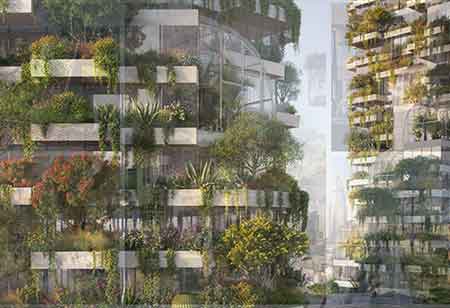Thank you for Subscribing to Construction Business Review Weekly Brief

How Building Sealing is Becoming a Pillar of Sustainability
The building sealing industry is transforming due to AI, robotics, IoT, and climate change, with Europe prioritising durability, flexibility, energy efficiency, and eco-friendly materials.
The building sealing industry is undergoing a transformative phase driven by a fusion of technological progress and environmental imperatives.
Artificial intelligence (AI) and robotics convergence are poised to fundamentally transform the building sealing sector. AI-driven systems can comprehensively analyse building blueprints, pinpointing the most suitable sealing solutions by considering material compatibility, environmental variables, and energy conservation. This innovation can mitigate human errors and minimise material wastage substantially. Moreover, robotic technologies can be precisely programmed to apply sealants efficiently, especially in challenging or hazardous locations. Envision a future where autonomous robots navigate building exteriors, applying sealants with meticulous precision to each joint, thereby ensuring optimal building functionality.
Furthermore, the advent of the Internet of Things (IoT) will be instrumental in this revolution. Embedded sensors within sealants enable real-time monitoring of their condition and performance, facilitating predictive maintenance and timely interventions. This proactive approach significantly extends building lifespans while reducing long-term operational expenses.
Climate change poses significant challenges for building sealing, driven by the rising frequency and severity of extreme weather events such as heat waves, heavy rains, and strong winds. This necessitates a fundamental rethinking of sealing solutions. In response, Europe is adopting strategies focused on durability and flexibility.
There is a growing preference for sealants like polyurethanes and silicones that offer robust resistance to extreme temperatures, UV radiation, and water ingress. Additionally, as Europe advances towards net-zero building goals, energy efficiency is critically emphasised through airtight seals. Low-emissivity (Low-E) foams and tapes are increasingly utilised to minimise heat loss through gaps and cracks, thereby supporting energy conservation efforts.
Moreover, there is a strong push towards sustainability in sealant materials. The industry is exploring bio-based and recycled materials to mitigate environmental impact and reduce the overall carbon footprint of building sealing practices. These initiatives underscore Europe's proactive approach to addressing the complex intersection of climate resilience, energy efficiency, and sustainability in building infrastructure.
The European Union's (EU) ambitious sustainability goals catalyse innovation within the building sealing sector. The Construction Products Regulation (CPR) underscores the significance of sustainable and high-performance materials. This, in conjunction with initiatives such as the Renovation Wave strategy, is nurturing the advancement of environmentally friendly sealing solutions.
The outlook for building sealing in Europe is brimming with promise. By adopting AI, robotics, and sustainable materials, the industry can forge a path toward buildings that not only withstand weather challenges and conserve energy but also contribute to a more sustainable Europe. This harmonious synergy between innovation and environmental stewardship will define the architectural landscape of the future.








